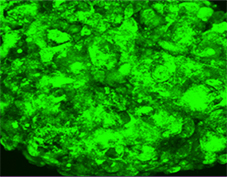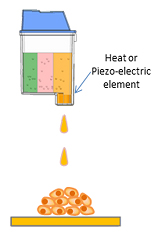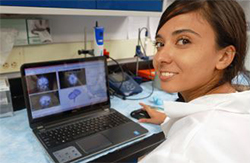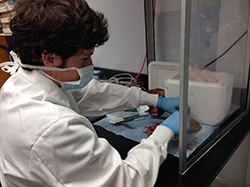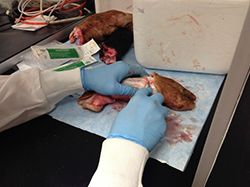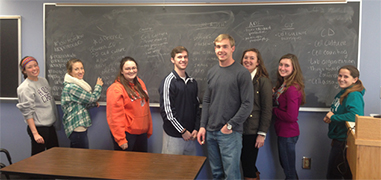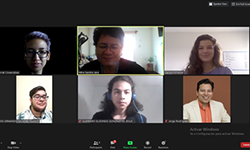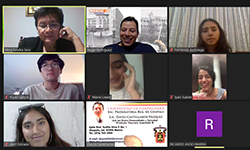Research
Biofabrication of Physiological-Relevant Tumor-like Tissue
The biomechanical properties of cancer cells have been identified as a key element to understand cancer fate. Single-cell analyses had revealed that cellular nanomechanical properties (i.e. elastic modulus) can serve to distinguish between metastatic tumorous and healthy cells. However, tumors conformed in complex shapes which differ from single-cell or two dimensional analyses. This study assesses the biomechanical properties of three-dimensional (3D) breast cancer (MCF-7) spheroids. The aim of this project is to better mimic the native form and functions of tumors to improve the predictive capabilities on routinely anticancer drug screening.
High-throughput 3D Spheroid Culture using Inkjet Bioprinting
Biological techniques have been developed to form more physiological relevant models; for example, cell aggregates/spheroids are formed to better resemble the dimensionality of tissues. A key challenge is to increase aggregate/spheroid formation reproducibility and throughput. These two aspects are mainly limited by the robotic systems used in extrusion/pressure systems or by standard manual micropipette techniques. Our work shows the use of a biofabricator, based on ultra-high throughput inkjet technology, to improve the speed and reproducibility of three-dimensional (3D) cell aggregate/spheroid formation.
Rapid Prototype of Brain Model for Preoperative Surgical Planning
Preoperative planning for challenging and high risk surgical procedures is an emerging field that allows risk reduction. Using patient’s MRI data a 3-dimensional (3D) brain model can be rendered and fabricated to provide surgeons with a practice tool prior to surgery. This projects is aim to develop the engineering process to fabricate a brain model with distinguishable areas of interest for vast neurosurgeons interests.
Mechanical Property Characterization of Chondrocyte Spheroids (CI/Undergraduate Research)
Cartilage regeneration and implantation is a field of tissue engineering that is gaining large amounts of attention. The goal of this research is to characterize the mechanical properties of chondrocyte spheroids when constructed in the presence of various growth factors. Our aim is to develop spheroids that have similar mechanical properties to that of native articular cartilage.
Cell Culture on Photovoltaic Surfaces: An Alternative to Trypsinization. (CI/Undergraduate Research)
Dissociating adherent cells from their culture surfaces requires trypsin, which compromises cell membrane integrity and kills cells over time. Eliminating the need for trypsin in cell culture would allow the study of living cells without subjecting them to enzymatic degradation. This project aims to culture cells on photovoltaic surfaces coated with charged proteins. Light striking the photovoltaic surface will induce a current, switching the charge of the photovoltaic surface. It is hypothesized that electrostatic repulsion of the charged proteins from the surface will cause cells to dissociate. This study focus on the preparation of photovoltaic surfaces prior to cell culture.
 Amada Stastny, Carolyn Arthur, and Caitlyn Jones
Amada Stastny, Carolyn Arthur, and Caitlyn Jones
presenting their work on photovoltaic surfaces
(Biomaterials Day 2014)
Exploring Cancer 3D culturing (CI/Undergraduate Research)
In today’s focus on tissue engineering a need for 3D cell culturing techniques has arisen. Conventional 2D planar culturing of cells lead to cells have less intercellular interactions and can cause the cells to de-differentiate. Multi-cellular spheroids resemble real tissues better than conventional monolayer cultures in terms of structural and functional properties. Furthermore, using a 3D spheroid model to mimic tumors can provide insight into the physiology of the tumor environment and can offer drug testing opportunities.
Freshman Medical Design (CI/Undergraduate Research)
Congenital limb deficiency is a condition where a child is born with an absence or partial development of a limb in one or more extremity. One in thirty-three infants are diagnosed with congenital anomalies which result in long-term disability and significantly impact their daily lives. Our Clemson Bioengineering group partnered with Brian Kaluf and Ability Prosthetics & Orthotics in Greenville, SC, in designing a primarily 3D printed interface between a child’s residual limb, which is shorter due to a congenital limb difference, and a crutch to increase his mobility independence. Our subject is restricted to the use a walker due to cerebral palsy, but has a goal of eventually using forearm crutches to walk. Our team created a customized forearm crutch interface that is comfortable and functional by allowing the child to walk using crutches. By producing the interface with 3D printing, it allows for the attachment to be created for under $200 respectively compared to manufactured prosthetics priced in the thousands of dollars. Our aim is to design a comfortable patient-suited crutch interface to provide independence on patient’s mobility.
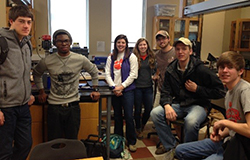

Design of Medical Devices for Low Resource Regions (CI/Undergraduate Research)
Developing countries face healthcare challenges every day, whether it is lack of supplies or a shortage of healthcare professionals. Medical devices and equipment that are considered standard in hospitals in the United States can be hard to find and very expensive in developing countries, such as Tanzania. Tanzania has recently made significant advances with the quality of their healthcare; however, the infant mortality rate is still ten times greater than that of the United States. This is due to the lack of technology available and untrained healthcare professionals to use these medical devices. The goal of this Creative Inquiry team is to design and develop medical instrumentation and monitors that are robust, user-friendly, and low-cost for developing countries. The students on this team will be expected to work on electronics and instrument design. The first project will focus on developing a neonatal temperature sensing and control system for the prevention of hyperthermia in premature babies for Tanzanian health centers. The next projects will focus on development and design of cheap pulse oximeter and electrocardiography systems to monitor the blood oxygen levels and heart rates in these babies. These types of projects not only have the ability to improve the lives of young infants and families, but they can also impact the medical field in developing nations worldwide. Current collaborations are mainly with Hospitals in Tanzania and in México.
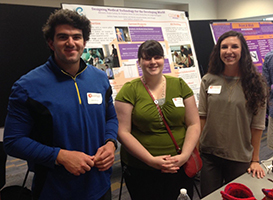 Justin Showghi (ME Undergrad), Kayla Gainey (Graduate mentor) and
Justin Showghi (ME Undergrad), Kayla Gainey (Graduate mentor) and
Sarah Stafford (BioE Undergrad) presenting in focus of creative inquiry 2015
ACTIVA tu speaking (CI/Undergraduate Research)
Students from Clemson team up with students from the University of Guadalajara and work on solving a global engineering challenge as a team. Virtual meetings are scheduled to debate each team's approach to the challenge. By the end of the program, a video/podcast is created by each team, showcasing their solution. Each team has bilingual mentors to provide advice about the scientific topic (ie. scientists, researchers, medical doctors, professionals)
This program aims to nurture your scientific creativity and develop your communication skills. Fall 2020 topics included "Podcast Music to my ears," "Myths and Facts of the use of House Growth Peppermint and Cayenne pepper" and "Stress during the COVID-19 Pandemic." See the outcomes of the Fall 2020 semester here:
https://spark.adobe.com/page/U9KRt3dw0THNM/

